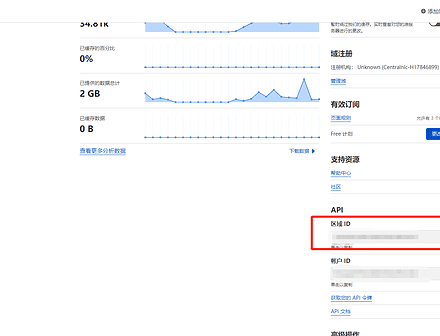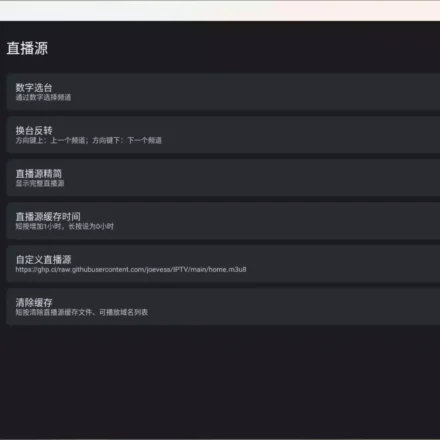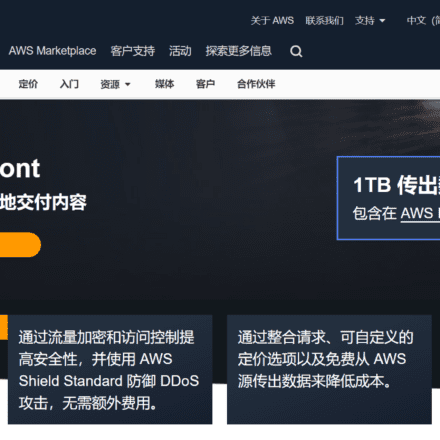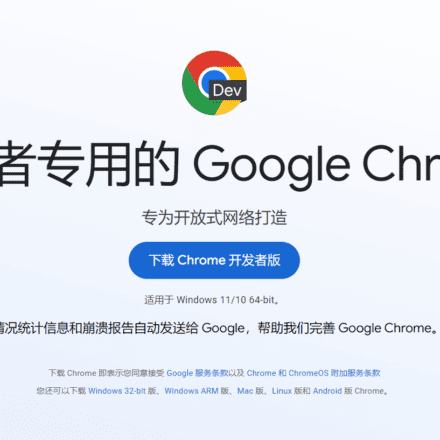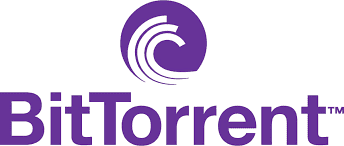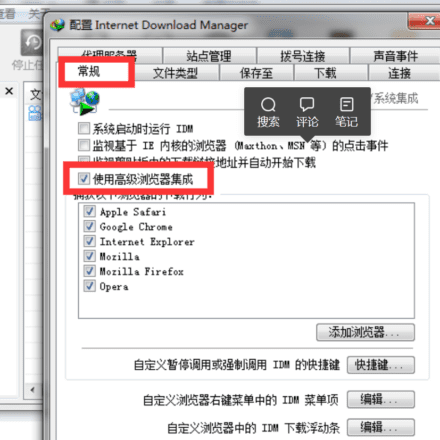Excellent software and practical tutorials
1. Static cache plug-in installation
First, toWordPressBackstagePluginsClick on the Install Plug-in list and search for "WP Super Cache", the first one is to install it.

2. Detailed configuration of static cache plug-in
After installing WP-Super-Cache and enabling it, go to Settings and set it up. The specific settings are as follows:
first, in General, check Enable caching (recommend).
Secondly, in Advanced:
1. Cache function, enable cache.
2. Cache implementation method, check simple mode.
3. Miscellaneous, do not check the cache for known users. Known users are mainly registered users of the website. If you do not check the administrator or user backend login, problems will occur and the jump will not be possible;
Do not check the GET request cache option, as it will affect the search page.
Compress the page to make it easier for visitors to browse. Check this option to compress the web page to speed up the opening of the web page.
Cache the http header file containing the page content, optional;
Check the cache rebuild checkbox;
Check 304 Not Modified Browser Cache;
Let known usersanonymousMake the content they browse cache files tick.
Enable dynamic caching. Requires PHP or traditional mode caching. This requires special configuration, so leave it unchecked for now;
Mobile device support, check it to facilitate quick access on mobile devices. With the current development trend of mobile Internet, the traffic of mobile access will gradually increase and exceed that of PC, so it needs to be paid attention to;
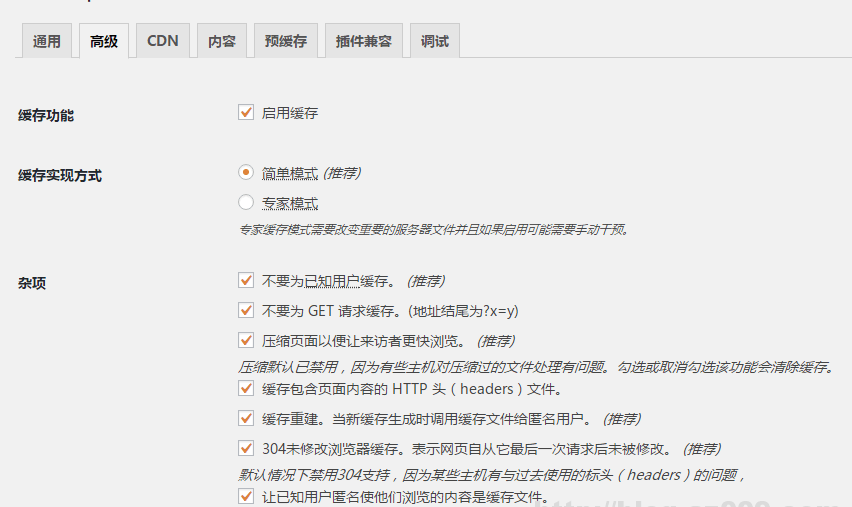
wp-super-cache
Remove the utf8 character set in the htaccess file and do not check it;
Clear the previous cache files when a new article or page is published or updated. Do not check this option, otherwise all previous cache files will be deleted when a new article or page is published;
For additional inspection on the home page, you can check it;
When a page has newCommentWhen you click on the Reply button, only the cache of this page will be refreshed. Otherwise, the visible content of the reply will still not be visible after the user logs in to reply. Please pay attention.
List all the latest cached pages on this page. You don't have to check it;
The Coarse file is locked. You don't need this file as it will slow down your site. Check it;
Initialize later. Display cache files after WordPress is loaded. Do not check it, do not check it, do not check it, otherwise the waiting (TTFB) will be in a waiting state for a long time and the webpage will open slowly. After many tests, when this option is checked, the most time-consuming part of the webpage is the TTFB, which is always in a waiting state, which takes about 1.5s, while it only takes about 130ms if it is not checked;
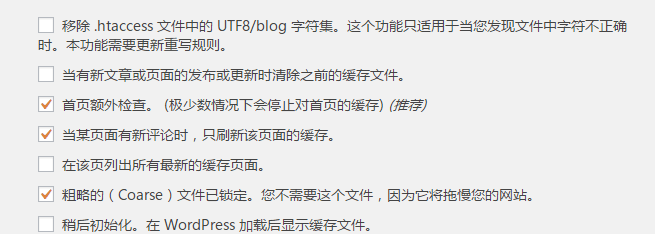
Files that are not cached, such as the homepage or main page, are statically cached because they are related to the first impression of users after entering the website. However, after caching, updated or published articles are not displayed.functionsAdd the following code to .php:
add_action('publish_post', 'refresh_front_page', 0); //Refresh the home page when publishing or updating logs
add_action('delete_post', 'refresh_front_page', 0); //Refresh the home page when deleting logs
Function refresh_front_page(){
$front_page_id = get_option('page_on_front'); //Get the page ID that displays the home page
wp_cache_post_edit($front_page_id); //Refresh the page
}This will update the homepage cache when you update or delete an article.

The cache timeout is set to 0, which means it never expires. The default settings are acceptable for general items.
Pre-caching.Precaching will take up some space to cache all articles and pages on the site. It is recommended to precache all. (It is not recommended to use shared hosting and too many articles)
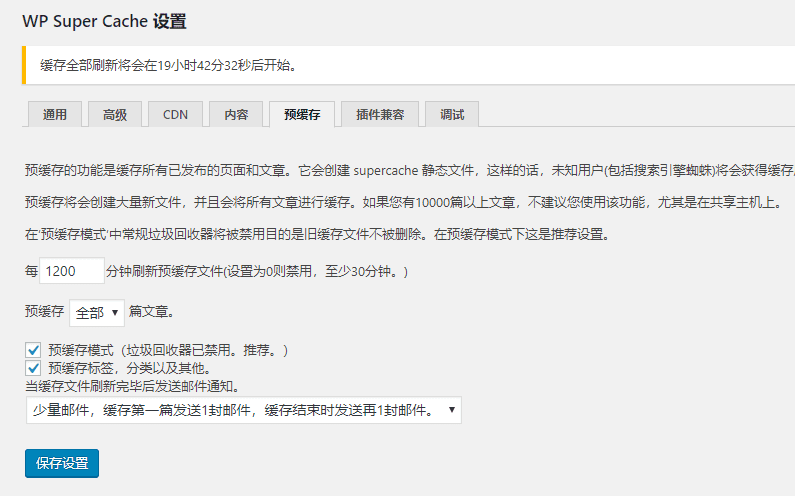
3. Notes
Static Cache Plugin In the advanced section of the static cache plugin WP-Super-Cache: first, do not check the cache for known users; second, do not check the initialize later option, otherwise the TTFB time for the website web pages to wait for loading will be too long; third, after caching the homepage, you need to add an update function in functions.php.


